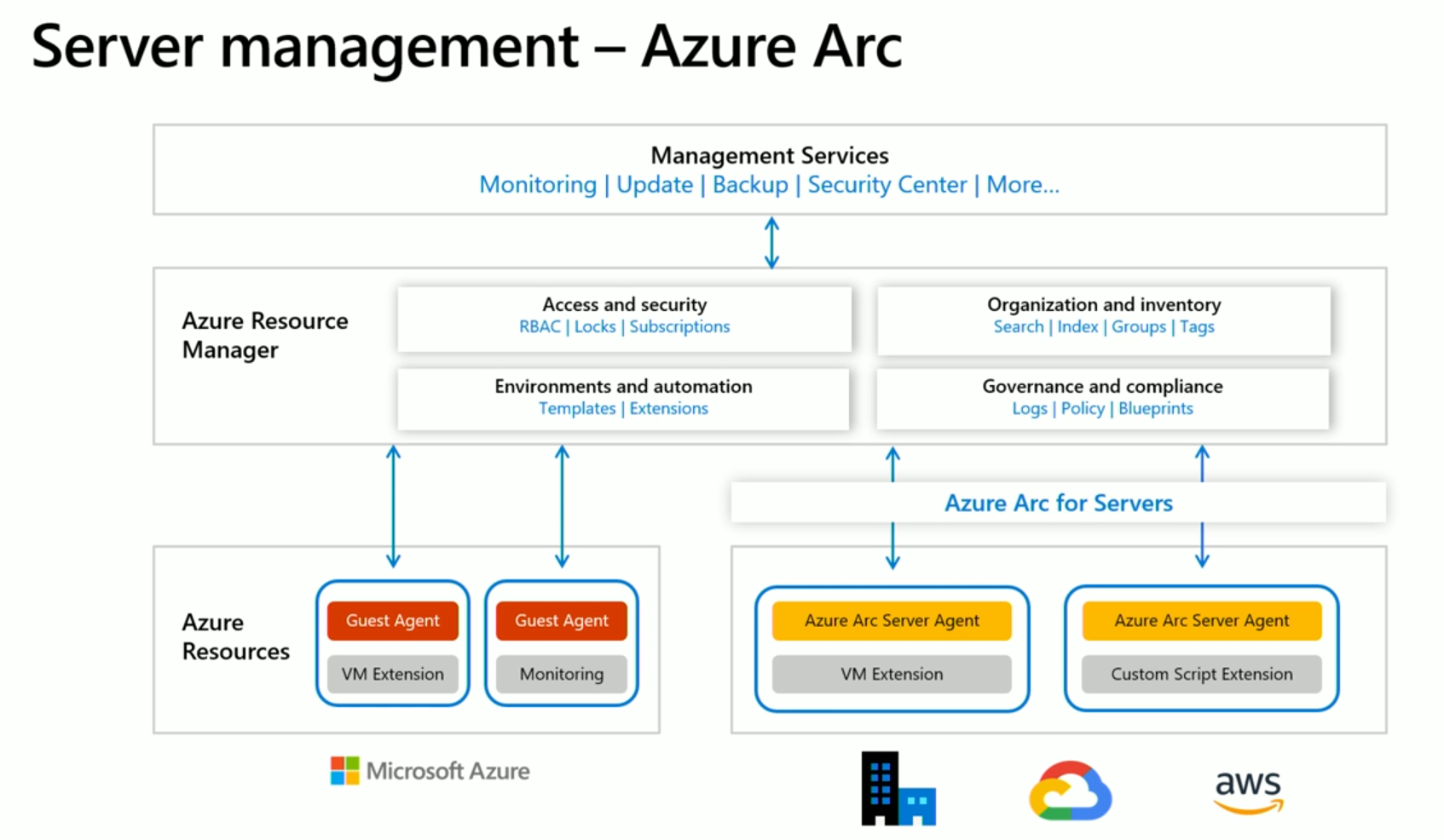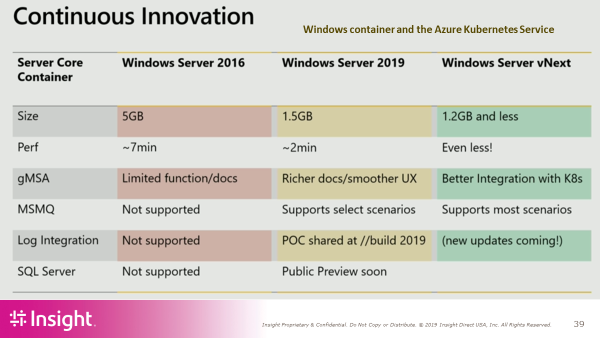Article Ignite 2019 update for service providers

By Insight Editor / 14 Nov 2019 / Topics: Cloud
Microsoft Ignite 2019 was a bustling event, lively, full of exciting news and announcements for more than 30,000 IT professionals from all over the world. We, Insight, were also there and attended as many sessions as we could that were interesting for service providers.
The core message of the conference focused on technical intensity and Microsoft's mission to empower every person and every organization on the planet to achieve more. With a cloud-first approach, cross-accessibility of more and more environments, clouds, applications and devices and reduced complexity in deployment, management, control.
Below is a summary of the most important announcements for service providers, based on our own input. For those who want to know more, there is the 87-page Ignite 2019 Book of News, which contains all announcements made during the conference.
Azure Arc: cohesive, server management and security on any cloud
One of the major announcements of Ignite 2019 for service providers was the preview of Azure Arc, Microsoft’s new approach to the hybrid world we face today. Azure Arc is the next step in unified management and security for complex and distributed environments across on-premises, edge and multicloud. Azure Arc enables deployment of Azure services anywhere. It extends Azure management to any infrastructure, including those offered by Amazon and Google, directly from Azure Resource Manager (ARM), eliminating the need for separate software tools or applications.

“With Azure Arc, customers can now take advantage of Azure’s robust cloud management experience for their own servers (Linux and Windows Server) and Kubernetes clusters by extending Azure management across environments. Customers can seamlessly inventory, organize, and govern their own resources at scale through a consistent and unified experience through the Azure Portal,” says Microsoft.
Integrated end-to-end management with Microsoft Endpoint Manager
The introduction of Microsoft Endpoint Manager brings Intune and System Center Configuration Manager (SCCM) functionality and data together. New intelligence has been added to offer an end-to-end management solution in a BYOD world to manage PCs, laptops, phones and tablets enterprises issued to employees from one single view. Microsoft Endpoint Manager provides modern management and security that helps businesses when they move to the cloud. Watch the video.
Moving up the stack with Power Virtual Agents
An announcement with a high impact for service providers who want to expand from infrastructure services to new, profitable cloud services. Power Virtual Agents is a low-code and no-code bot building solution, enabling anyone, regardless of technical ability, to create and deploy intelligent virtual agents, which can be external or internal facing. Built on the Azure Bot Framework, the solution includes AI driven insights to help create and improve conversational agents for personalized customer service. Think of customer service questions and other types of external or internal inquiries that can be automated serviced by a virtual agent.
Windows Virtual Desktop: RDS Migrate support and MSIX app attach
A major announcement on Windows Virtual Desktop (WVD) for service providers is that Microsoft launched a new tool in Azure Migrate to support RDS migration to WVD. Features have been added that extend Azure Migrate from an assessment tool mainly to include migration support, simplifying the migration of RDS environments to WVD.
Furthermore, Windows Virtual Desktop now includes support for MSIX app attach, which is based on FSLogix technology. By adding MSIX app attach, service providers can attach an application to an OS similar to Profile Containers; the application itself is completely detached from the operating system. FSLogix Profile Containers is now the recommended profile solution for both RDS and WVD above User Profile Disk (UPD). The user experience for WVD increasingly gets better and it is easier for service providers to manage.
Windows Virtual Desktop is the only service that delivers simplified management, a multisession Windows 10 experience, optimizations for Office 365 ProPlus, and support for Windows Server Remote Desktop Services desktops and apps.
Further news form Ignite 2019 in soundbites
- The new Microsoft Edge and Microsoft Bing – the browser and search engine for business – will be released in January 2020.
- New Azure regions will be rolled out for Windows Virtual Desktop, counting to 10 regions worldwide by April 2020.
- Azure Quantum will be released: a full stack, open cloud ecosystem that will bring the benefits of quantum computing to developers and organizations around the world.
- New innovations in Microsoft Teams enhance collaboration and business processes for all workers.
- Project Cortex, a new AI-based service in Microsoft 365, empowers people and teams with learning and expertise, and creates a knowledge network in the flow of their everyday work.
- The web-based version of Visual Studio is now live in preview. Deeply integrated into GitHub, it allows developers to access the online version of Visual Studio from anywhere.
- Two new AMD EPYC 7452 virtual machines are available for Azure, targeted toward "enterprise-grade applications, relational databases, and application servers,” says Microsoft.
- Dedicated Host is an Azure Service that provides physical servers dedicated to one Azure customer, e.g. in order to comply with legal or health regulations.
- Ephemeral OS disks available, which means a faster reimage cycle and lower costs for stateless applications, e.g. website applications, game server hosting services, VMSS applications.
- Early 2020, Azure Spot VMs will become available: scalable compute capacity at deep discounts for huge cost savings.
- Pre-Provisioned Service, based on AI, dramatically improves Windows VM Deployment to seconds instead of minutes.
- Project Tardigrade further improves Azure reliability, preventing loss of data and speeding up the recovery of VMs even when their host platforms have a hardware outage.
- Azure Shared Disks enables fast failover and high availability for clustered databases, parallel file systems and container volumes.
- Cost-effective data storage in Azure will be increased with Reserved capacity, saving up to 38% 100TB and 1PB pre-purchase for 1-3 years.
- With more than 70%, Microsoft runs the majority of on-premise workloads and container adoption is growing. Windows Container and the Azure Kubernetes Service is continuously innovating with each new Windows Server Version.



